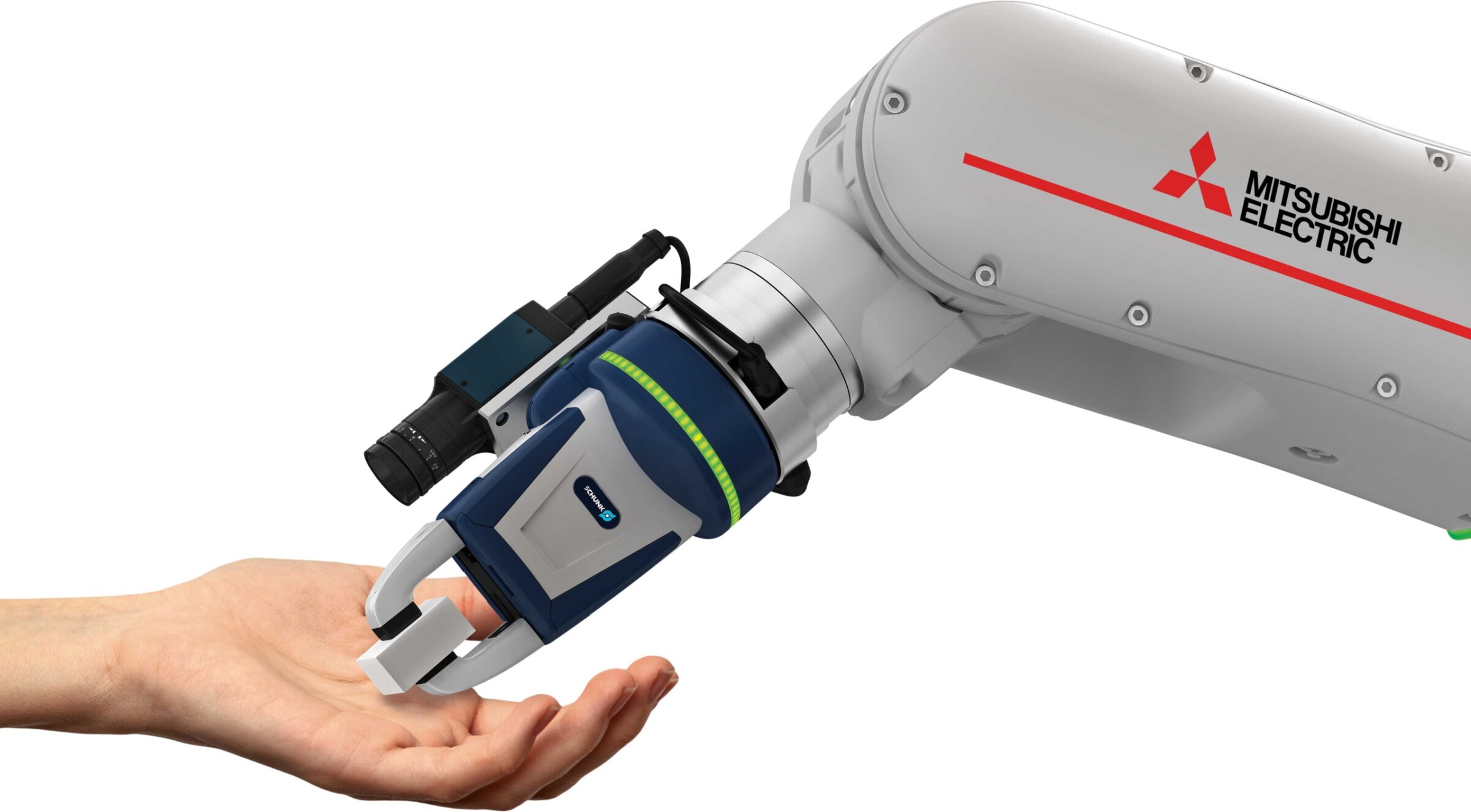
To keep up internationally, industry and craftsmen are having to automate. However, there is a growing market trend towards meeting individual customer needs with a greater diversity of products in smaller batches. Industrial robots are therefore often used instead of customised but less flexible specialised solutions. Not only are they easier to adapt to changing tasks, but they are also cheaper. With this market segment in mind, collaborative robots have been developed that can operate directly with humans without barriers.

High-grade, spot-on and versatile in their applications. Collaborative robots in use in medium-size enterprises.
“Since many industrial work processes can be easily and cost-effectively automated with robots, they can now be found at all levels of industrial and even craft production applications,” says Michael Finke, Product Manager Robots at Mitsubishi Electric Europe in Ratingen. The number of industrial robots newly installed each year in Germany thus increased from 14,061 in 2010 to 26,723 in 2018. In the two years since then, there has been a slump to around 22,000 per year, but the relatively small decline in COVID year 2020 shows that industry and craft businesses are continuing to frequently opt for robotic solutions when investing in new equipment, regardless of the crisis. In terms of the types of robots used, articulated robots predominate, well ahead of gantry, SCARA and parallel robots. Mitsubishi Electric has been producing industrial robots with nominal loads of up to 70 kg for many years and has a large market share in the articulated robot market segment. For SCARA robots, the share is in the double-digit range.
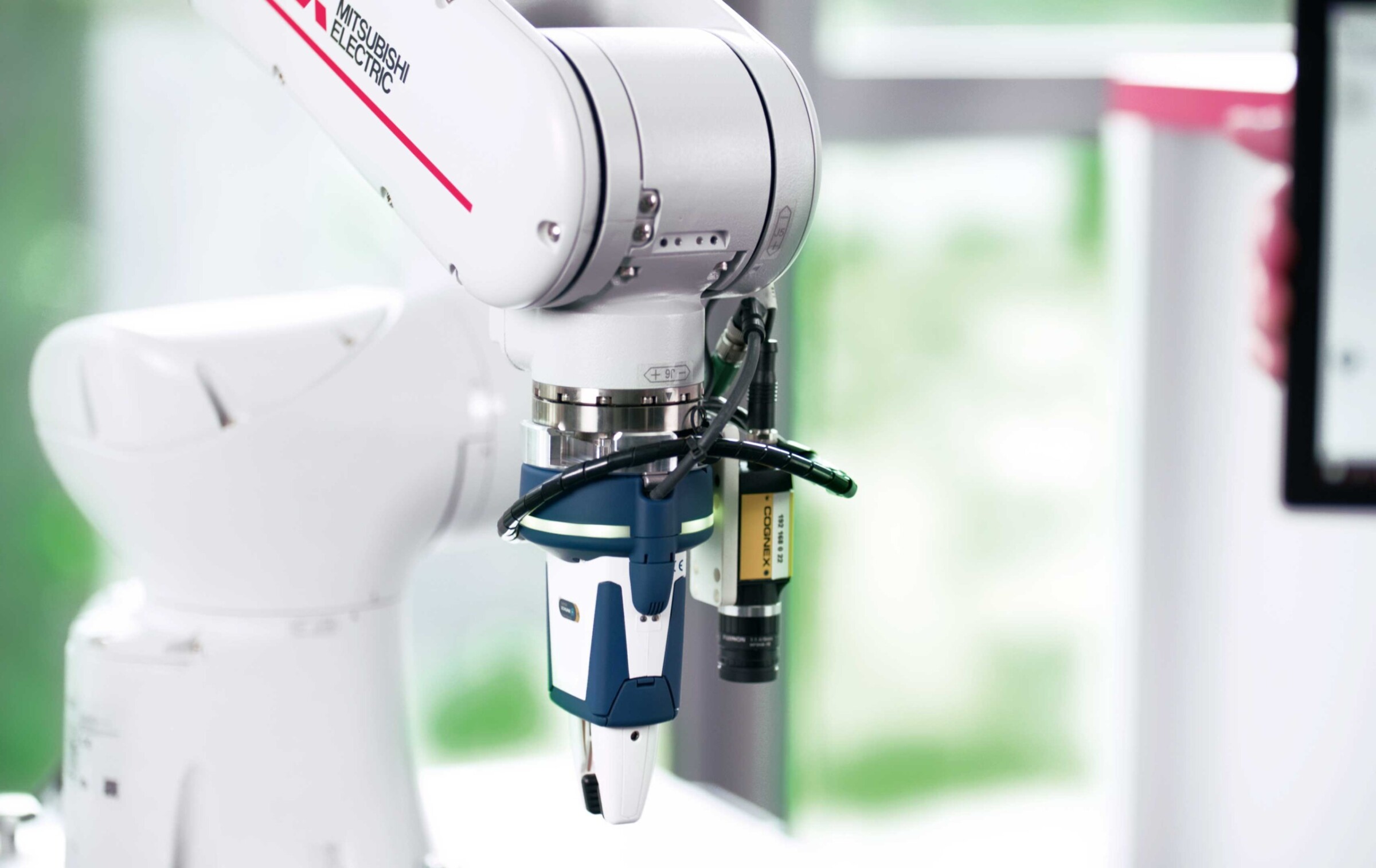
Hand in glove with the robotic workmate.
“The direct collaboration of conventional industrial robots with humans is not possible because working in the immediate vicinity is dangerous,” adds Finke. The work area therefore has to be strictly demarcated by enclosures or other safety systems. This has so far ruled out any chance of combining the reliability and strength of the robot with human flexibility and creativity, especially where smaller quantities and rapidly changing jobs are concerned (High-Mix Low-Volume production or HMLV). Cobots (a neologism combining the terms “collaborative” and “robot”) were therefore developed to remedy this situation, being designed to stop immediately whenever their sensors detect unforeseen contact with humans. This prevents injuries from occurring. In addition, their axis speed is reduced to such an extent that employees can take evasive action in good time. In addition, they are easier for employees to operate than conventional industrial robots and can be programmed directly at the workstation. This opens up exciting new applications for the automation of tasks, especially in the HMLV field.
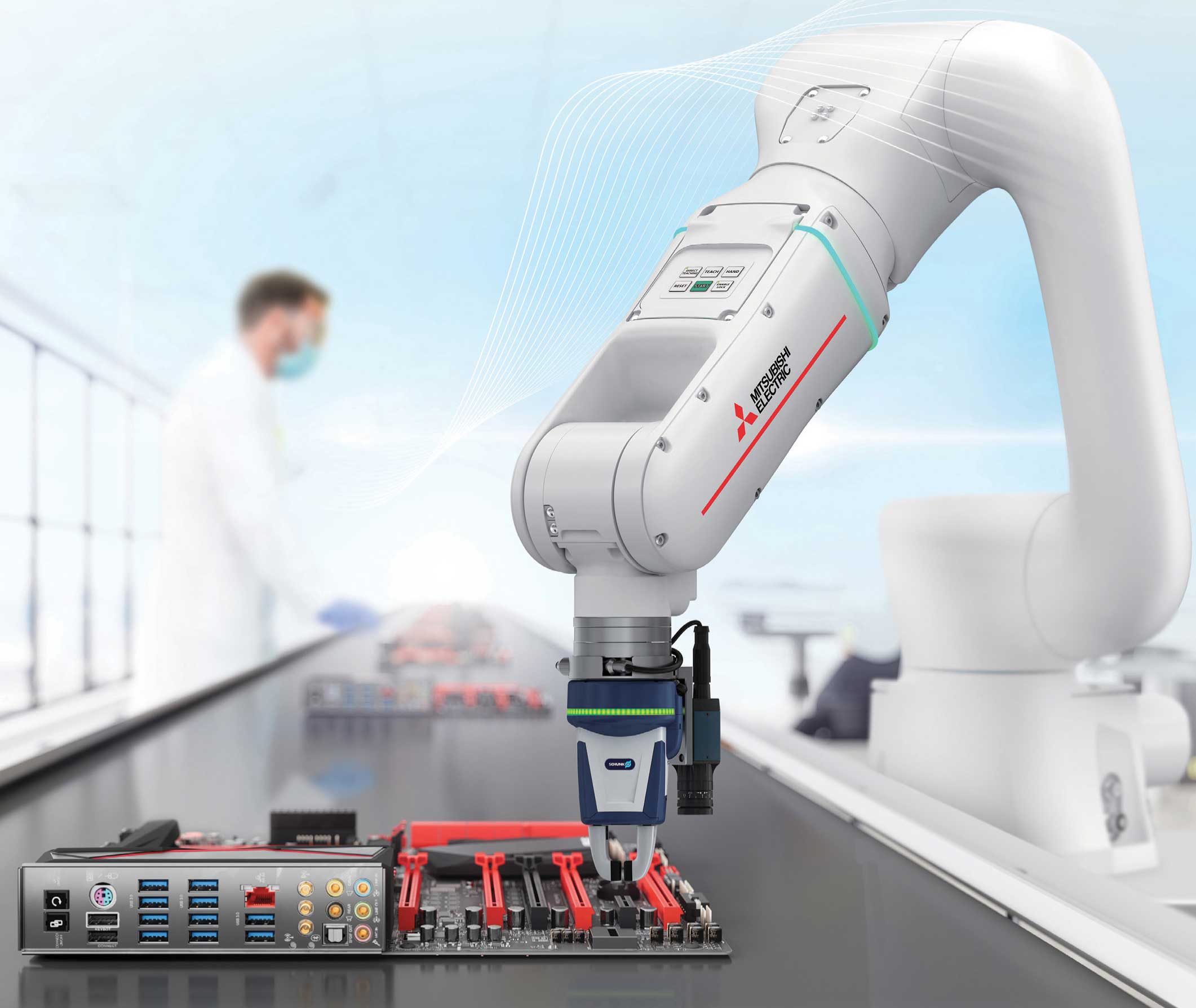
The MELFA Assista is suitable for handling small loads of up to 5 kg.
“Mitsubishi Electric has entered this attractive market with its MELFA Assista,” says Finke. In contrast to the often low-cost offerings on the cobot market, the MELFA Assista is a “genuine” industrial robot and is in no way inferior to a standard industrial robot in terms of precision and positioning accuracy. It has an exceptionally high repeatability of ±0.03 mm with a nominal load of 5 kg and a reach of 910 mm. It owes its ability to collaborate directly with humans to its extra high-resolution angle encoders in all axes and extremely fast-reacting drives. As a result, it reacts to even the tiniest deviations from the path after contact with an unexpected obstacle by coming to an immediate standstill. In standard cobot mode, it also executes all movements at reduced speed for safety reasons. If a safety contact is suitably fitted, it can be transformed into a “normal” industrial robot that performs its tasks at high speed. As a special feature, the MELFA Assista has AI-supported self-diagnosis, thus simplifying maintenance, as well as open interfaces for integration into higher-level IT structures through to Industry 4.0 solutions.
“A key advantage of cobots is their ease of programming, which enables rapid set-up even without expertise in robot programming,” Finke reveals. Initially this is most easily done by hand-guided teaching. Here, the user takes the arm and moves it to the desired position, storing the new position by pressing a button on the keypad integrated in the arm. For the operator, the procedure is both time-saving and intuitive.
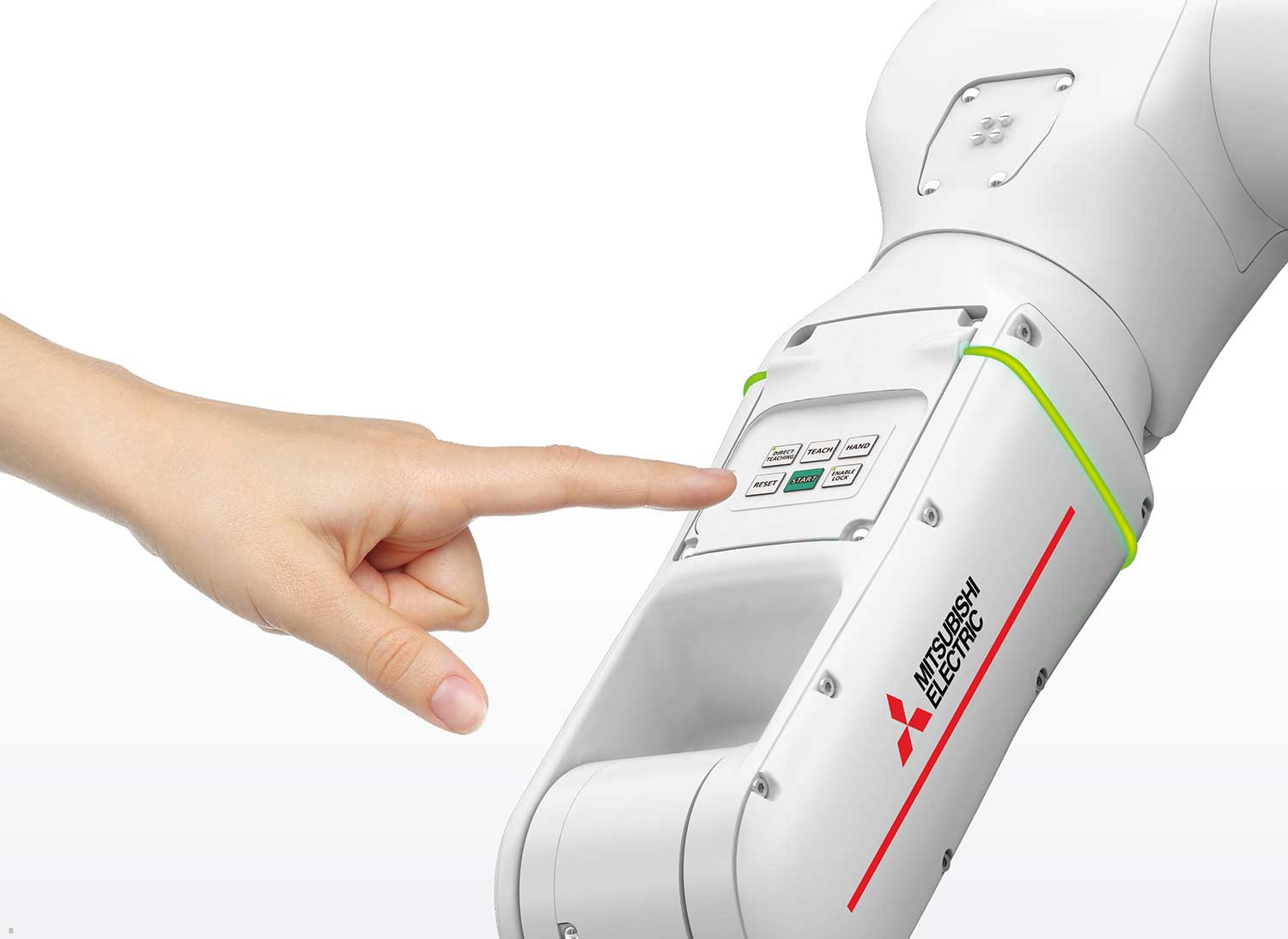
Programming is very simple by guiding the robot arm by hand to the desired position. A keystroke is all that is needed to confirm the position.
For more challenging programming tasks, there is also software for visual programming via tablet computer. A “virtual twin” helps here, which graphically displays the robot together with its working environment. The RT VisualBox enables the programming of various movement functions as well as individual adjustments to each movement by drag & drop. This means that even operators without special knowledge of robots can modify the program settings.
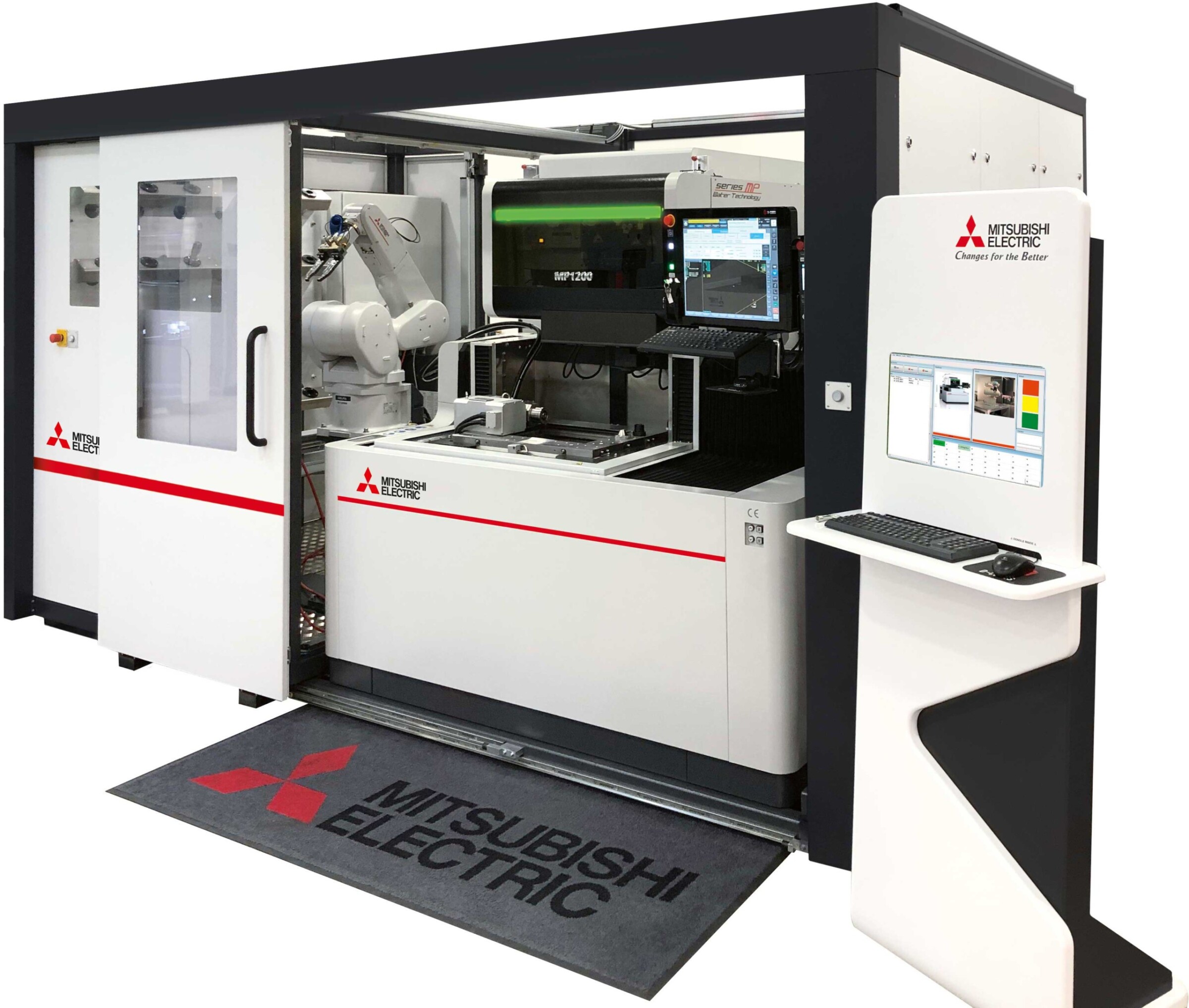
“Many industrial work processes can be easily and inexpensively automated with robots.” Michael Finke, Product Manager Robots at Mitsubishi Electric
“The solution to specific production problems often requires the involvement of different specialists with expertise in a whole range of fields,” explains Finke. An example of this is the DiamondCell for the precise profiling of grinding wheels in a wire EDM system with the help of a Mitsubishi Electric industrial robot. Here, a system integrator has combined numerous systems and technologies in a compact cell to create a functional unit. In principle, a resourceful medium-sized company could of course buy a robot directly from Mitsubishi Electric and work with it itself. Both advisory and training services are on hand. Even pre-configured grippers are available straight from the manufacturer. In general, however, for such a project it makes more sense to turn to a system integrator who specialises in such holistic solutions. Mitsubishi Electric would of course be happy to help in the search for suitable experts.
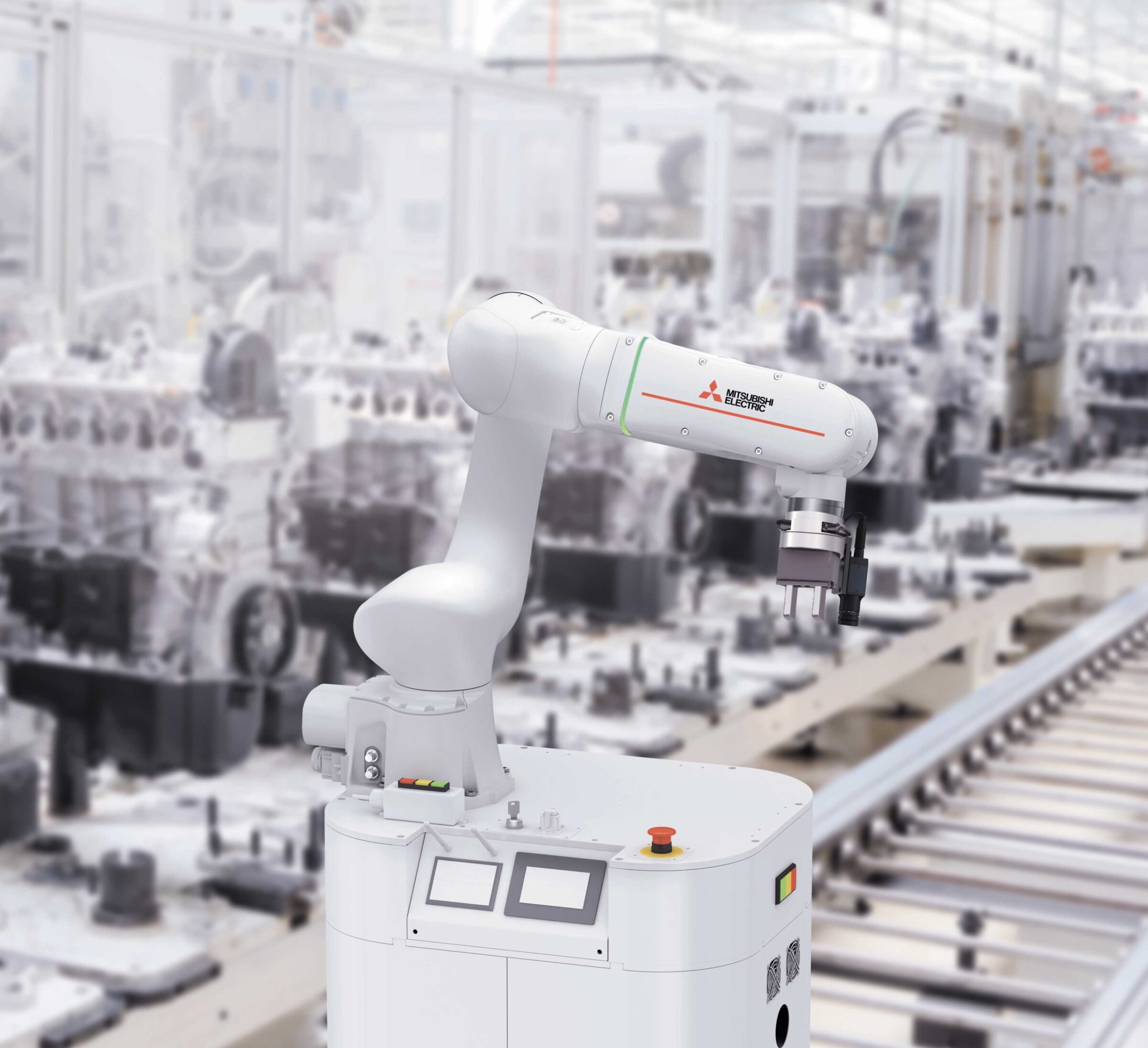
Combining reliability, power, flexibility and creativity.
Direct collaboration with humans.
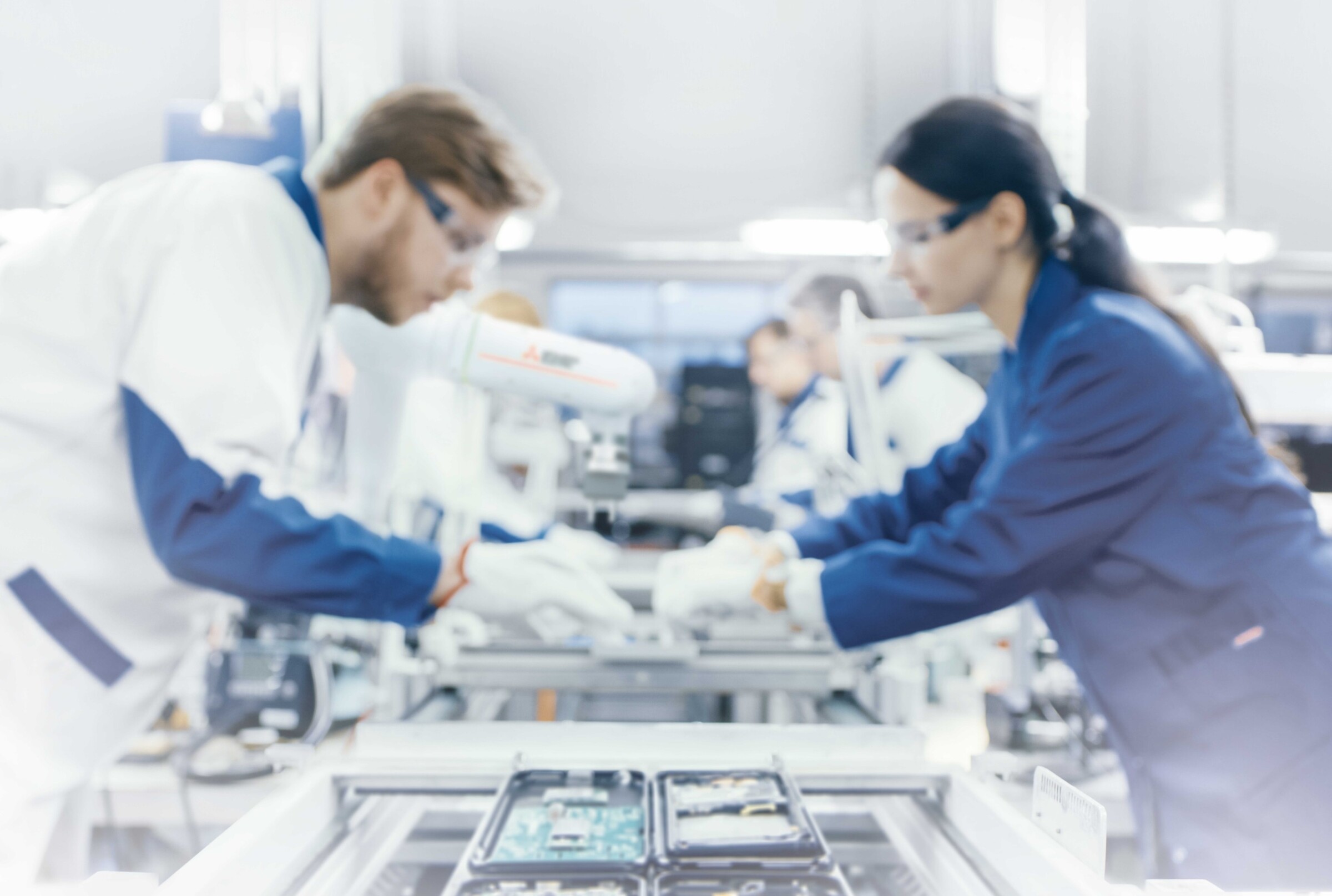
The MELFA Assista cobot from Mitsubishi Electric is designed for direct collaboration with humans.

Michael Finke, Product Manager Robots at Mitsubishi Electric
A key advantage of cobots is their ease of programming, which enables rapid set-up even without expertise in robot programming.
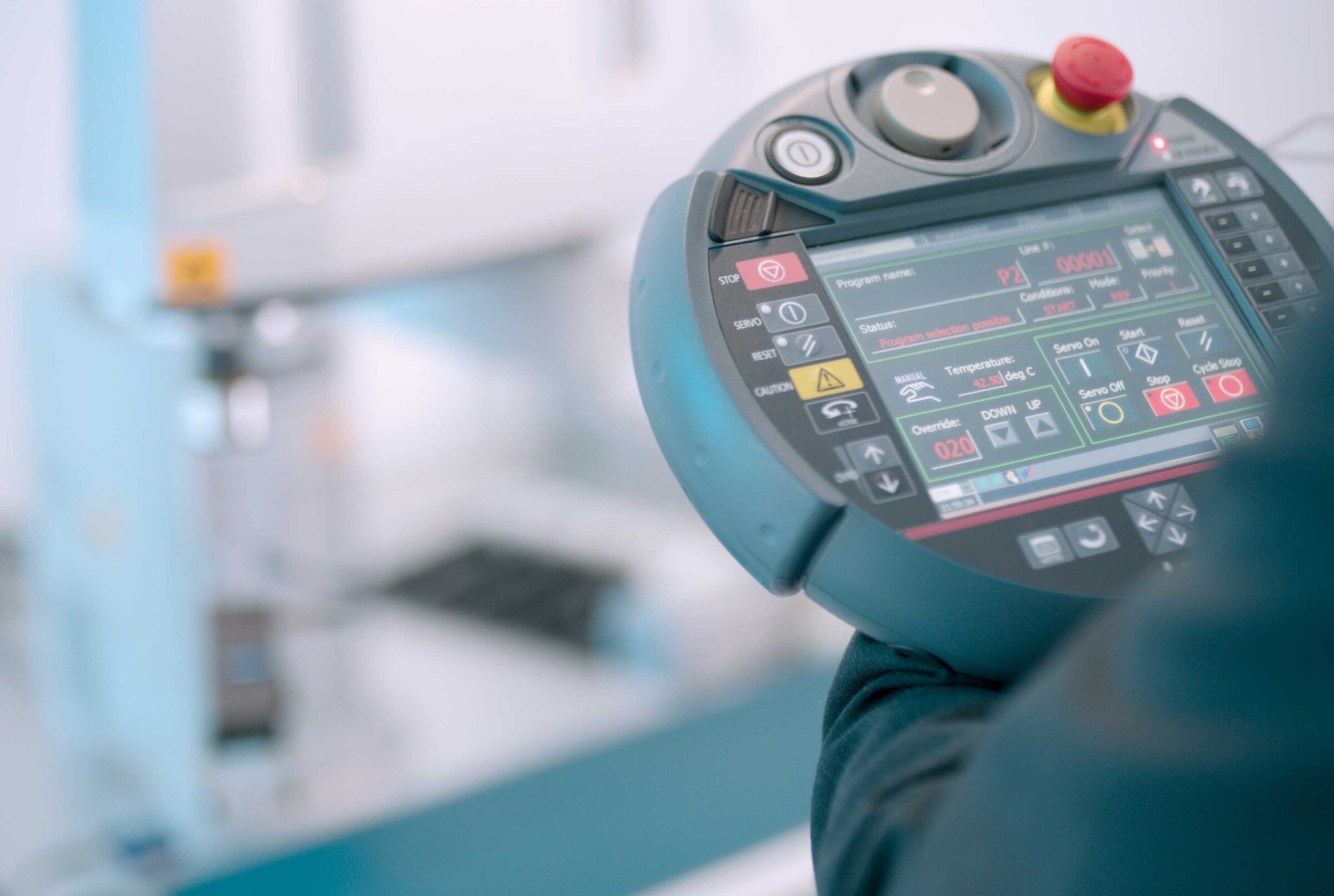
Example of industrial robot use in medium-size companies
Name and place of company:
Mitsubishi Electric
Germany
Founding year:
1921
Managing Director:
Kei Uruma
Employees:
146,500
Core business:
Production of electronic devices, e.g. EDM systems, laser cutting systems, CNC controls and drives, industrial robots, air conditioning systems, semiconductor equipment and much more besides
Mitsubishi Electric
Mitsubishi Electric Europe B.V. Mitsubishi-Electric-Platz 1
40882 Ratingen
Germany
Tel +49 (0) 2102-486-0
edm.sales@meg.mee.com
www.mitsubishielectric.de
Fields marked with a * are mandatory.
Mitsubishi Electric Europe B.V.
German Branch
Mitsubishi-Electric-Platz 1
D - 40882 Ratingen
Sales
Tel.: +49 (0)2102 / 486 - 6120
edm.sales@meg.mee.com
Service
Tel.: +49 (0)2102 / 486 - 7600
edm.hotline@meg.mee.com
Applications
Tel.: +49 (0)2102 / 486 - 7700
edm.applikation@meg.mee.com
Spareparts
Tel.: +49 (0)2102 / 486 - 7500
edm.parts@meg.mee.com